
Michelle Fost is a writer living in Toronto. Her writing has appeared in Geist Magazine, The New York Times Book Review, The Philadelphia Inquirer, and elsewhere. She is a book review and fiction editor at Cleaver.
A CONVERSATION WITH BETH KEPHART, AUTHOR OF MY LIFE IN PAPER: ADVENTURES IN EPHEMERA BY MICHELLE FOST
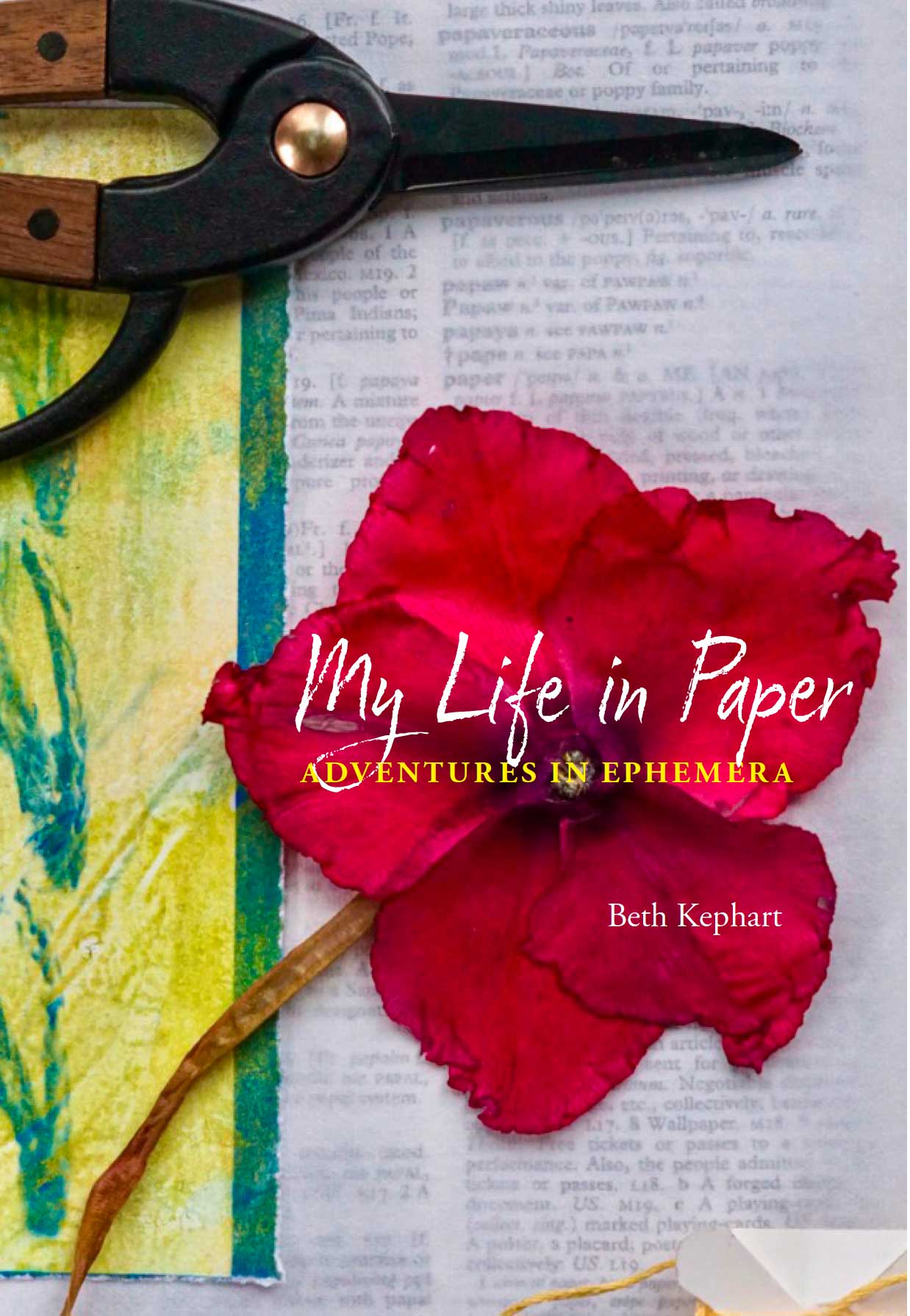
A Conversation with Beth Kephart author of My Life in Paper: Adventures in Ephemera Temple University Press, 336 pages Interview by Michelle Fost I had the chance to have a conversation with Beth Kephart, whose new book, My Life in Paper, has recently been published. Our conversation took place over email, one back and forth a day for about a week. Widely creative as well as accomplished, Beth became absorbed in making handmade books and paper during the pandemic, a practice that is central to My Life in Paper. Take a workshop with Beth Kephart online, Sunday February 25, 2-4 p.m. WRITING ADVANCED BY CATEGORIES: TURNING OUR OBSESSIONS INTO STORIES. Sign up here. Michelle: Congratulations on the publication of your beautiful new book, My Life in Paper: Adventures in Ephemera. Your book invites making connections of many kinds, craft to craft, potting happening in the basement and papermaking a floor above, the writing of a book to the making of paper. I want to start with a comparison of your working to that of a potter, with a specific potter in mind. This is something of a chance comparison, but I am really curious to see where it sends our conversation ...
MICHELLE FOST INTERVIEWS MARC LABRIOLA
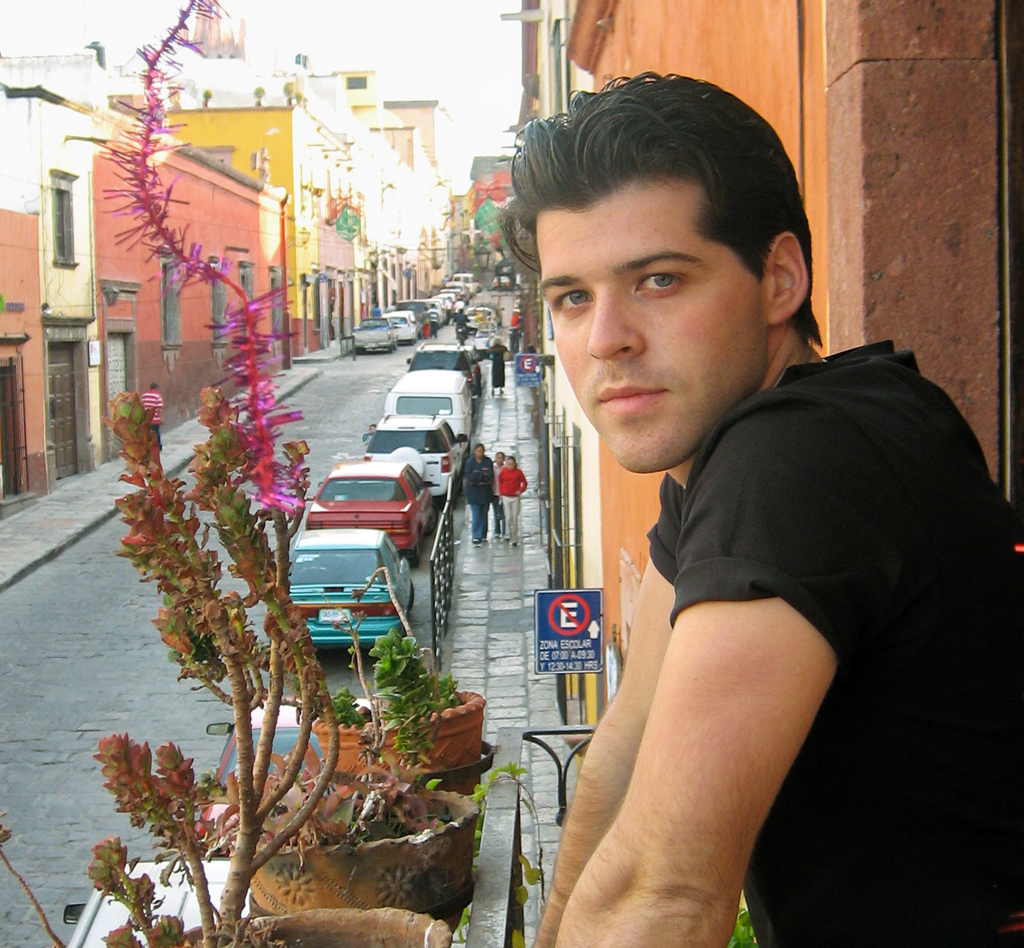
A Conversation with Marc Labriola, Author of DYING BEHAVIOUR OF CATS, from Quattro Books (Winner of the 2017 Ken Klonsky Award), 124 Pages Interview by Michelle Fost Congratulations to Marc Labriola on winning the 2017 Ken Klonsky Award for Dying Behaviour of Cats, along with publication of the novella by Quattro Books. You can read Marc’s first two published short stories, “Cutman” and “Self-Portrait with Broken Nose,” in Issues 7 and 9 of Cleaver Magazine. In Marc’s latest work, we follow Theo, a man shut inside the home of his father after a hurricane. There is a leopard perched above him, on the roof. Theo watches the news reporting his story on television, where they split the screen: on one side, Theo, and on the other, the leopard; as the crowd across the street looks on, Theo views himself as half man, half beast. Michelle Fost: The leopard on the roof! In Dying Behaviour of Cats, Theo’s rich inner life seems to have become externalized. I wondered if there are writers who were models for you for what you set out to do here. Writers you admire? Can you talk a little about influences? Marc Labriola: Yes, let’s begin with ...
A CONVERSATION WITH KATHRYN KULPA, author of Girls on Film
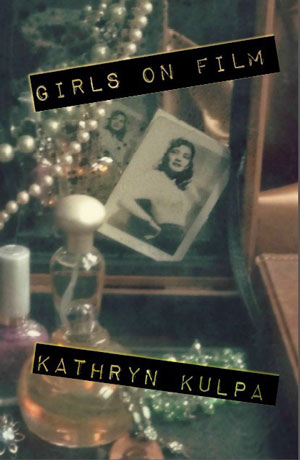
An Interview by Michelle Fost
A CONVERSATION WITH KATHRYN KULPA, AUTHOR OF GIRLS ON FILM (Paper Nautilus Press, 2015 Vella Chapbook Winner) I had the chance to catch up with fellow Cleaver editor Kathryn Kulpa about her chapbook, Girls on Film. It is just out from Paper Nautilus and was a winner of the press’s Vella Chapbook Contest. An intriguing part of the prize is that the writer receives a hundred copies of the beautifully designed chapbook to distribute as she likes. Kathryn will be selling signed copies through her Etsy shop, BookishGirlGoods, and she’ll also have them available at readings, writing workshops, and other events. Paper Nautilus will also have the book on sale. For more about the Vella Chapbook contest and Paper Nautilus Press, have a look at the press’s website.—M.F. MF: Congratulations on winning Paper Nautilus’s Vella Chapbook Contest, and the publication of Girls on Film. I wondered if you might talk a little about the process of writing the chapbook. KK: All the pieces in the chapbook were already written, and most of them had been published by the time I put it together, so it was more a process of selecting and matching complementary stories to create a ...
A CONVERSATION WITH KATHRYN KULPA, AUTHOR OF GIRLS ON FILM (Paper Nautilus Press, 2015 Vella Chapbook Winner) I had the chance to catch up with fellow Cleaver editor Kathryn Kulpa about her chapbook, Girls on Film. It is just out from Paper Nautilus and was a winner of the press’s Vella Chapbook Contest. An intriguing part of the prize is that the writer receives a hundred copies of the beautifully designed chapbook to distribute as she likes. Kathryn will be selling signed copies through her Etsy shop, BookishGirlGoods, and she’ll also have them available at readings, writing workshops, and other events. Paper Nautilus will also have the book on sale. For more about the Vella Chapbook contest and Paper Nautilus Press, have a look at the press’s website.—M.F. MF: Congratulations on winning Paper Nautilus’s Vella Chapbook Contest, and the publication of Girls on Film. I wondered if you might talk a little about the process of writing the chapbook. KK: All the pieces in the chapbook were already written, and most of them had been published by the time I put it together, so it was more a process of selecting and matching complementary stories to create a ...
OSTEND: STEFAN ZWEIG, JOSEPH ROTH, AND THE SUMMER BEFORE THE DARK, nonfiction by Volker Weidermann, reviewed by Michelle Fost
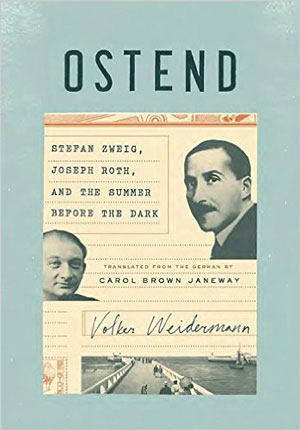
OSTEND: STEFAN ZWEIG, JOSEPH ROTH, AND THE SUMMER BEFORE THE DARK by Volker Weidermann, translated by Carole Brown Janeway Pantheon Books, 165 pages reviewed by Michelle Fost …it would be something, to my mind, if the museums would display not only the finished article but the preparatory studies, the sketches, the plans which preceded them, so that people did not regard the finished work as something which just dropped out of the sky, but instead realized that these masterpieces were created by their brothers, men just like them, created through great pain, with suffering, with joy, torn from the raw material of life at the highest price to the soul. —Stefan Zweig, “The Secret of Artistic Creation,” 1938 Volker Weidermann’s Ostend gives us the stories of writers Joseph Roth and Stefan Zweig, along with an ensemble of friends, coming for summer holiday to a favorite Belgian beach resort. The style is clipped and brief. History, dark fairy tale, friendship, fleeting joy, literary enchantment, dissipation, destruction, exile. Ostend reads as a time capsule that Weidermann has sorted through for us, and organized. It’s 1936, and the holiday begins like a David Hockney print, with an inviting surface of sea and sun ...
IN OTHER WORDS, essays by Jhumpa Lahiri, reviewed by Michelle Fost
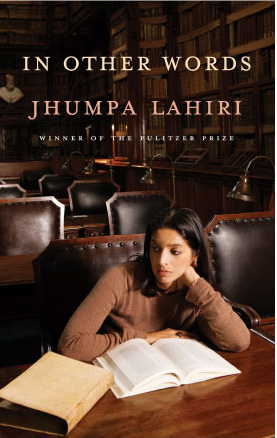
IN OTHER WORDS by Jhumpa Lahiri translated from the Italian by Ann Goldstein Knopf, 233 pages reviewed by Michelle Fost In Other Words, a departure for Jhumpa Lahiri as she turns for the first time to memoir, took shape as weekly writing assignments—in Italian—that were published over six months in the Italian magazine Internazionale. Regular deadlines and the constraint of writing in a language she was still learning re-energized Lahiri. These very personal pieces are framed and contained self-portraits. They are fascinating, focused, and at times repetitive, and give the sense of a complex literary artist with a passion for language. Part of Lahiri’s accomplishment in In Other Words is her recovery of a way of working that is unspoiled by the expectations of a demanding readership. I thought of a story told to me by an early childhood educator about a child who loved to paint. An adult, looking at the child’s work asked, “Is that a flower?” Is that the sun? What a beautiful yellow.” For weeks, the child, now self-conscious, did not return to paint. Lahiri’s project is a return to a literary garden, a place where she is free to play with language and expression in a way ...
HAW by Sean Jackson reviewed by Michelle Fost
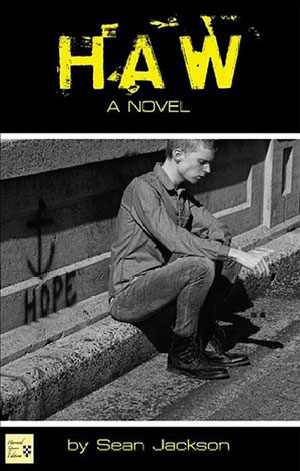
HAW by Sean Jackson Harvard Square Editions, 181 pages reviewed by Michelle Fost Sean Jackson’s first novel, Haw, recently out from Harvard Square Editions, is an ecological nightmare narrative, the story of a world starved for clean water. When I first came across Jackson’s writing in his short story “How a Ghost Is Made” (in Issue 7 of Cleaver) I was impressed by Jackson’s snappy, lean prose style. In “How a Ghost Is Made,” Jackson portrays a woman who is in the process of pulling away from the husband who is cheating on her. We first encounter Shelly while she is out for a run. As Jackson describes: “She leans into the next turn, bursting up Spindale Street like they taught her at Oberlin: run till you can’t think straight, then back off one gear.” The anger in the story moves similarly—high throttle, then backing off just enough. Shelly runs in a lush setting and her anger as she moves towards her emotional leave taking gives the story a satisfying, raw, unbridled energy. Shelly’s external world—her surroundings on her run—appears full, but her internal world feels stripped down, impoverished, giving some power to her reaching out in memory (however ...
THE LAST FLIGHT OF POXL WEST by Daniel Torday reviewed by Michelle Fost

THE LAST FLIGHT OF POXL WEST by Daniel Torday St. Martin’s Press, 291 pages reviewed by Michelle Fost In Daniel Torday’s debut novel The Last Flight of Poxl West, two first-person tales wrap around each other. This intertwining is in itself fascinating, especially given that one of the strands is an account of a man who repeatedly pulls away from those he feels closest to, seemingly unable to sustain intimate connections. Torday begins the novel in the voice of Eli Goldstein, a Boston-area teenager who bears witness to the literary rise and fall of his adopted uncle, Poxl West. Eli finds his Uncle Poxl’s success as a writer absolutely thrilling. These two have a special relationship—they greatly enjoy each other’s company, going together to cultural events such as operas and symphonies—and, best of all, afterwards going out to Cabot’s for ice-cream, conversation, and the sharing of early drafts of Uncle Poxl’s writing in progress. Eli is Poxl’s first and probably most adoring audience for his book, Skylock: The Memoir of a Jewish RAF Bomber. Eli takes a lot of pleasure in following the book’s reception. After the memoir is reviewed in The New York Times, Eli imagines Poxl’s response ...
TROMPE L’OEIL by Nancy Reisman reviewed by Michelle Fost
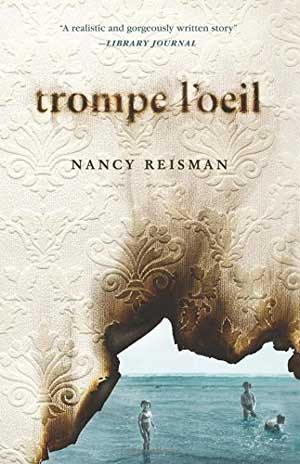
TROMPE L’OEIL by Nancy Reisman Tin House Books, 352 pages reviewed by Michelle Fost Does a good life play out like a well made film? Nancy Reisman has published two excellent books—a prize-winning collection of stories, House Fires (it won the Iowa Award for Short Fiction in 1999) and a novel, The First Desire. Now her second novel, just published by Tin House, Trompe L’Oeil, comes along and almost tricks the eye to thinking it is about a real family, or perhaps about what we can learn from a carefully curated assemblage of painters (descriptive response to their work is incorporated into the novel) including Edouard Vuillard, Michelangelo Merisi da Caravaggio, and Georges de la Tour. Still, there is something more exciting at play in Trompe L’Oeil than the saga of the Murphy family or the discussion of visual art within the novel. This is a novel that finds beauty and resolution by testing how real life and literary art are like filmmaking. Reisman can sound like Virginia Woolf, but her experimentation also places her in the company of contemporary film directors like Terence Malick and Richard Linklater. If she has written a love letter to cinema, it’s ...
SINGLE, CAREFREE, MELLOW by Katherine Heiny reviewed by Michelle Fost
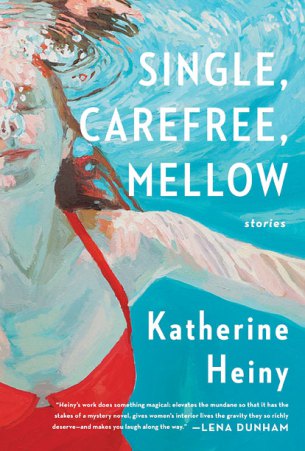
SINGLE, CAREFREE, MELLOW by Katherine Heiny Alfred A. Knopf, 224 pages reviewed by Michelle Fost In Katherine Heiny’s very funny debut collection of stories, Single, Carefree, Mellow, women seek out a little more love, a little more sex, a little more passion. They have affairs with teachers, bosses, married men, and neighbors. Who can blame them? The comedy of their attachments made me think of the experiments of Konrad Lorenz, the ethologist who showed us how fuzzy little goslings, seeing a man instead of a mother goose after hatching, would naturally treat the man as their mother. These women and their men—as hilarious in their pairings as the goslings trailing behind a grown man, and they have no idea! Such innocents! Take Sasha in the opening story, “The Dive Bar,” of Heiny’s collection. She’s rattled by a phone call from the wife of her lover. The wife, Anne, whose name Sasha does not recognize, invites Sasha to meet for a drink. “And to paraphrase Dr. Seuss,” Heiny writes, “Sasha does not know quite what to say. Should she meet her for drinks? Now what should she do? Well, what would you do if your married lover’s wife asked you?” Sasha’s ...
HOW YOU WERE BORN by Kate Cayley reviewed by Michelle Fost
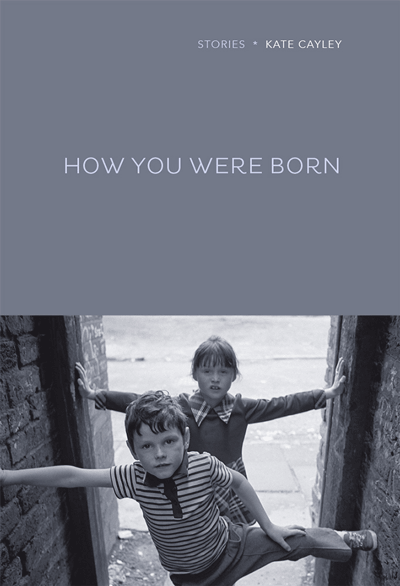
HOW YOU WERE BORN by Kate Cayley Pedlar Press, 152 pages reviewed by Michelle Fost Years ago, I was lucky enough to take a fiction writing class at Penn with the late, great cultural critic John Leonard. I was reminded recently—while reading Kate Cayley’s remarkable short story collection How You Were Born—of a story he told our class. A year earlier he met with his friend Elie Wiesel for lunch and coffee at a diner on the upper West side, and Wiesel appeared distraught. His wife was pregnant, and Wiesel felt miserable about the idea of having a child. He didn’t see how he could possibly bring a child into a world where the Holocaust is possible. A year later, shortly before our class, they met again. This time Leonard found Wiesel already there, at the same table, but his demeanor was completely changed. He stood up and greeted Leonard warmly. There wasn’t a trace of distress in his manner. When Leonard sat down, Wiesel handed him a huge photo album to look through, sharing what seemed like hundreds of photographs of the new baby. How You Were Born is an archive of anxiety. In the story “Young Hennerly,” Robert ...
THE MATHEMATICIAN’S SHIVA by Stuart Rojstaczer reviewed by Michelle Fost
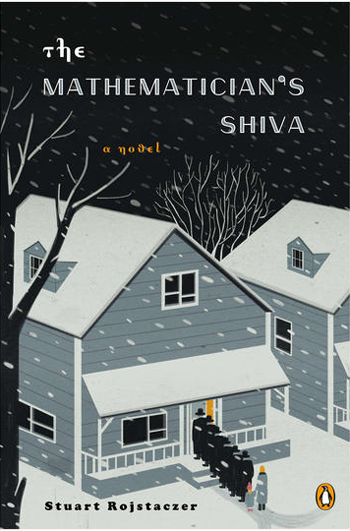
THE MATHEMATICIAN’S SHIVA by Stuart Rojstaczer Penguin Books, 366 pages reviewed by Michelle Fost Stuart Rojstaczer’s debut novel The Mathematician’s Shiva follows a son mourning the death of his remarkably powerful mother. It’s a first person narrative, very chatty, in the voice of Sasha Karnokovitch, a professor of Atmospheric Sciences who studies the physics of hurricanes. Yes, his mother was something of a hurricane. Her death brings with it a kind of celebration of her genius, with a procession of mathematicians descending on the family to participate in the funeral and the seven days of shiva that the family observes afterwards. What attracts the mathematicians and why doesn’t Sasha want them there? The mathematicians believe that Sasha’s mother, Rachela Karnokovitch, may have solved or at least been well on her way to solving the Navier-Stokes problem, one of the greatest of contemporary mathematical problems. The mathematicians—as a group crazy and invasive in Sasha’s eyes, yet also validating his sense of his mother’s greatness—travel to Madison, Wisconsin, prepared to tear up the floorboards of the mathematician’s office and home if it will lead them to clues toward solving Navier-Stokes. The possibility that the novel will explain and offer a solution ...
PANIC IN A SUITCASE by Yelena Akhtiorskaya reviewed by Michelle Fost

PANIC IN A SUITCASE by Yelena Akhtiorskaya Riverhead Books, 307 pages reviewed by Michelle Fost Late in Yelena Akhtiorskaya’s debut novel, Panic in a Suitcase, a character recalls a classic tale “about the lady who goes to see the rabbi and complains that life is so terrible with her slob of a husband and the crying children in a tiny apartment with such neighbors you start to think it might be better to be homeless, and the rabbi advises the lady to get a goat…” In the version I remember, the rabbi continues recommending that the lady bring another animal, and then another, one at a time, into her very crowded house, until finally, when the family is suitably miserable, he recommends getting rid of all the animals. Back to where they started—the original crowded condition—suddenly feels luxuriously spacious, and the family can’t thank the rabbi enough. I was surprised to see that Akhtiorskaya chooses to bring in an abbreviated telling of the story, introducing only one goat into the house rather than an entire menagerie, because so much of the fun of Panic in a Suitcase is its comedy of excess, her ingenuity for adding just one more thing ...
HOME LEAVE by Brittani Sonnenberg reviewed by Michelle Fost

HOME LEAVE by Brittani Sonnenberg Grand Central Publishing, 259 pages reviewed by Michelle Fost Brittani Sonnenberg’s debut novel, Home Leave, unfolds as a lyrical meditation on loss, geographical place, expatriate experience, sibling rivalry, family, and growing up. Sonnenberg writes with clarity about the messiness of the expat Kriegstein family’s lives. To tell her story, Sonnenberg begins the opening section improbably from the point of view of the mother’s childhood home. Yes: we hear from a house. What I liked very much about the novel is that it continued in this way, rough and tumble in its narration, jumping from first person accounts in the voices of the family, third person voices, first person plural voices, and so on. Home Leave has the fitting feel of a kid landing somewhere without concern about fluency but a willingness to tell her story using the language that works. Sonnenberg captures beautifully what it’s like to grow up as an American abroad, not as a tourist but not fully as a native either. There’s bougainvillea, there’s spitting on the streets, there’s dancing in the public square. There’s always loss and longing—whether it’s for a simple box of Honey Bunches of Oats, the ...
DEPT. OF SPECULATION by Jenny Offill reviewed by Michelle Fost
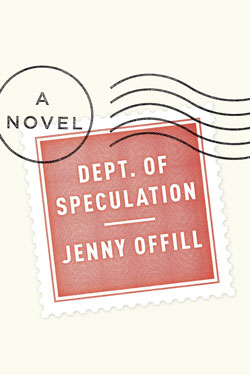
DEPT. OF SPECULATION by Jenny Offill Alfred A. Knopf, 177 pages Reviewed by Michelle Fost Here’s an idea for a book party. Hold it in the Guggenheim. Set up an exhibit of all the pages of the book. Frame each page and display them in sequence, ending at the bottom of the ramp. Enlarge the pages 10X the size of the Borzoi Book edition pages, because the first line of the book is “Antelopes have 10X vision, you said” but also so that it’s possible for many viewers to be reading a single page. Hope for crowds. Leave the walls behind the framed pages white, to call attention to the writer’s use of white space as well as the visual appeal of the blocks of text in this accomplished second novel. See if anyone at the bottom of the ramp wonders if the experience of the novel is like what could happen if, say, Rothko had created a series of paintings to be viewed sequentially and that expressed an artist’s emotionally fraught love story. Or maybe if Terrence Malick created an exhibit of still photographs that told a similar story. The passages that make up Jenny Offill’s 46 brief chapters ...
THE HYPOTHETICAL GIRL by Elizabeth Cohen reviewed by Michelle Fost

THE HYPOTHETICAL GIRL by Elizabeth Cohen Other Press, 256 pages Reviewed by Michelle Fost Like so many of the characters in Elizabeth Cohen’s fifteen incisive stories in The Hypothetical Girl, Emily in the title story is truly suffering. Her affliction is contemporary. Girl meets guy online, falls hard for him, and is rejected by him before their relationship ever has a chance to develop out in the real world. What happens when people connect online, on sites like Letsgethooked.com, Flirtypants.com, and Yummybaby.com? Many of the stories have a sad, humorous and twisted logic. Emily—who meets Nick on Matchmaker.com—walks right into the new anxiety. “I think I miss you,” she says to Nick. “Can one miss someone one has never met?” Nick’s answer (“You can, but it is ridiculous”) is devastating. In a way, it is a simple case of unrequited chat love. Nick does not see Emily as a real person, only as an online chat partner. Cohen captures his problematic point of view: “‘You are not an actual girl,’ he wrote. ‘You are hypothetical.’” Emily’s feelings for Nick, a guy locked away in the online universe, lead her to experience herself—not Nick!—as less and less real. She is overwhelmed ...
HALF THE KINGDOM by Lore Segal reviewed by Michelle Fost
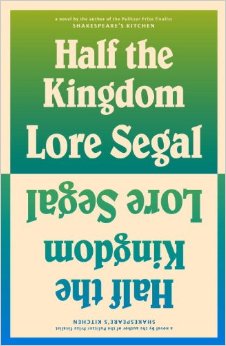
HALF THE KINGDOM by Lore Segal Melville House, 176 pages Reviewed by Michelle Fost Late in life, after health issues led my grandparents to move to a retirement community called Stonegates, my grandfather referred to their neighbors as his fellow inmates. I am still puzzling over Lore Segal’s new novel, Half the Kingdom, but I think she beautifully casts some theatrical lighting on the full inner lives and personal histories of the inmates. It’s as though Segal lifts a lid on what she might call, here, the Crazy Box of stories inside her aging characters. The lives of Joe Bernstine, Lucy Friedgold, Samson Gorewitz, Ida Farkasz, and a few others intersect in the emergency room and on the seventh floor of the Senior Center of the Cedars of Lebanon hospital. The open lid won’t reveal enough: part of the story here is that though Joe, Lucy, Samson, Ida, and their peers clearly hold a wealth of stories inside them, it is painfully difficult for them to deliver their stories to the outside world. What they wish to communicate too often is trapped and locked up inside them. In the case of Lucy, she is completely distracted by the fact ...
THE SENSUALIST by Daniel Torday reviewed by Michelle Fost

THE SENSUALIST by Daniel Torday Nouvella Books, 177 pages Reviewed by Michelle Fost I've been thinking a lot about how I am at once very connected to and disconnected from Germany, and I’ve been exploring this feeling in a novel I’m working on. My grandparents were German Jewish refugees, sailing from Hamburg, Germany, to Ellis Island in 1934. We talked very little, my grandparents and their grandchildren, about their lives in Germany before they left. If their lives were an apartment building, it was as though we always entered on the third floor, and were welcome to walk around anywhere from the third floor and up but never below. We didn’t notice anything unusual. Obviously, there are good reasons for not talking about what was left behind by German Jews who escaped the holocaust. But there is also tremendous loss in disowning all of it. Sam Gerson, the narrator of Daniel Torday’s novella The Sensualist, has a similar relationship to his grandfather and his past. His grandfather rarely talks about his background as a Jewish Hungarian refugee, and Sam has not been especially curious. But Torday gets across the surprising strength and importance of the experience of the past generation—as ...
THE AUTOBIOGRAPHY OF DANIEL J. ISENGART by Filip Noterdaeme reviewed by Michelle Fost
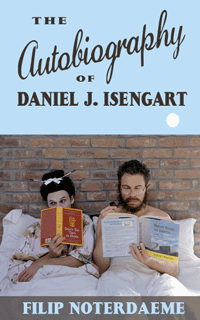
THE AUTOBIOGRAPHY OF DANIEL J. ISENGART by Filip Noterdaeme Outpost19, 351 pages Reviewed by Michelle Fost Because Gertrude Stein wished readers would pay more attention to the ambitious but largely unread work she considered her masterpiece, The Making of Americans, she had a tendency to knock her very popular Autobiography of Alice B. Toklas. Years ago, as a young fiction writer working on a master’s thesis on The Making of Americans, I sometimes identified with Stein. Here she is, in that book, wondering if her work will be read: Bear it in your mind my reader, but truly I never feel it that there ever can be for me any such a creature, no it is this scribbled and dirty and lined paper that is really to be to me always my receiver,—but anyhow reader, bear it in your mind—will there be for me ever any such a creature… listen while I tell you all about us, and wait while I hasten slowly forwards, and love, please, this history of this decent family’s progress. I was impressed by her direct expression of a longing to be read, and the lonely seriousness of her project. Like Stein, I championed ...
DR. RADWAY’S SARSAPARILLA RESOLVENT by Beth Kephart reviewed by Michelle Fost
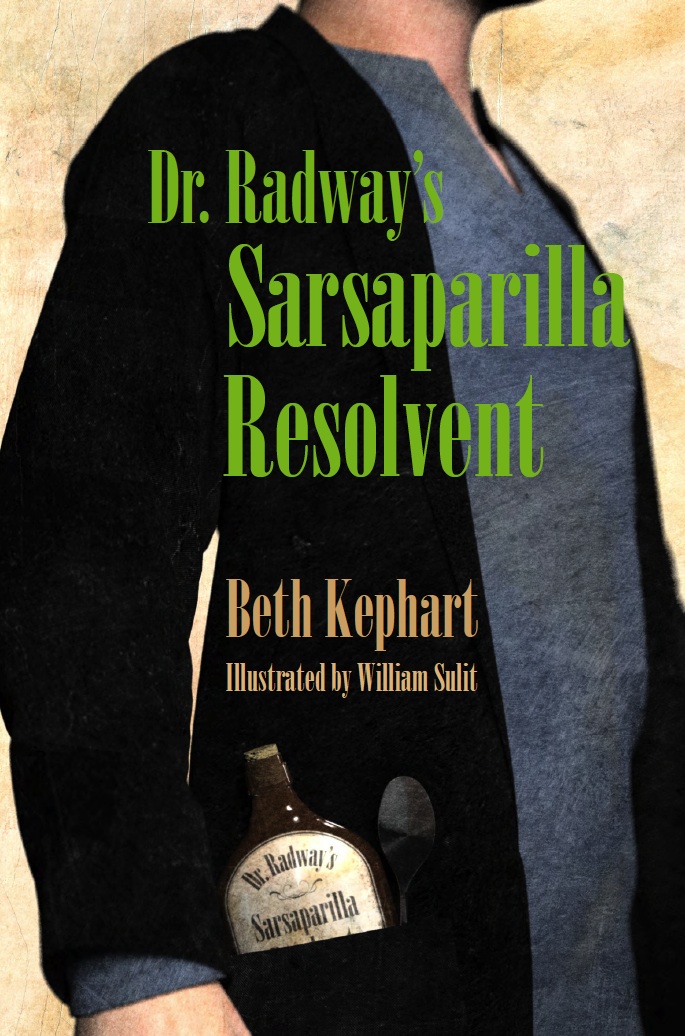
Beth Kephart, illustrated by William Sulit, reviewed by Michelle Fost
DR. RADWAY’S SARSAPARILLA RESOLVENT (New City Community Press, 190 pages) When I lived in Philadelphia, I sensed its history underfoot. One pleasure of Beth Kephart’s lively new historical Philadelphia novel is the strong fit of the writer’s project and the story she tells. In Dr. Radway’s Sarsaparilla Resolvent, Kephart looks at material from the past that we might consider lost to us and demonstrates how traces of that past stay with us through research and writing. In her story of William Quinn in 1870’s Philadelphia, too, much has been lost. As fourteen-year-old William goes in search of what has been taken from his family and as he thinks about what he is missing (including a murdered brother and a father in prison), we see that a great deal of what is loved can be recovered. William internalizes his brother Francis’s voice and can imagine what Francis would say to him at an important moment. Dr. Radway’s Sarsaparilla Resolvent shines as a novel about grief itself, suggesting that in thinking about what we miss, we keep what’s missing alive. Dr. Radway’s Sarsaparilla Resolvent opens with a haunting image. In a story William ...
DR. RADWAY’S SARSAPARILLA RESOLVENT (New City Community Press, 190 pages) When I lived in Philadelphia, I sensed its history underfoot. One pleasure of Beth Kephart’s lively new historical Philadelphia novel is the strong fit of the writer’s project and the story she tells. In Dr. Radway’s Sarsaparilla Resolvent, Kephart looks at material from the past that we might consider lost to us and demonstrates how traces of that past stay with us through research and writing. In her story of William Quinn in 1870’s Philadelphia, too, much has been lost. As fourteen-year-old William goes in search of what has been taken from his family and as he thinks about what he is missing (including a murdered brother and a father in prison), we see that a great deal of what is loved can be recovered. William internalizes his brother Francis’s voice and can imagine what Francis would say to him at an important moment. Dr. Radway’s Sarsaparilla Resolvent shines as a novel about grief itself, suggesting that in thinking about what we miss, we keep what’s missing alive. Dr. Radway’s Sarsaparilla Resolvent opens with a haunting image. In a story William ...
MY BEAUTIFUL BUS by Jacques Jouet, translated by Eric Lamb reviewed by Michelle Fost
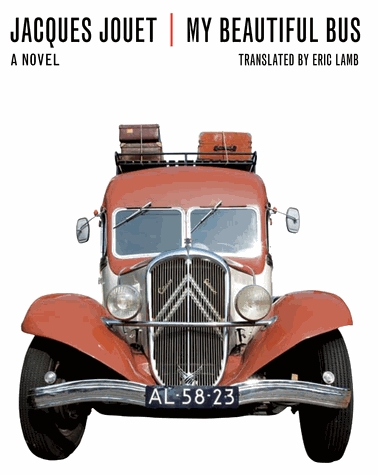
Jacques Jouet, translated by Eric Lamb, reviewed by Michelle Fost MY BEAUTIFUL BUS (Dalkey Archive Press, 130 pages.) Jacques Jouet’s My Beautiful Bus reminded me of an observation by a former teacher of mine, playwright Romulus Linney. In 2011, a good friend, whom I’d first met many years ago in Linney’s class at the University of Pennsylvania, e-mailed me with the sad news of his death. In his obituary, the New York Times quoted Linney, “My writing will add up to the sum total of me. The choices I make with my writing have a lot to do with myself as an unfolding personality, so that in the end your writing is really your destiny.” Linney was an influential teacher for us young aspiring writers, always telling us to “go deeper” with our writing. Even after death, his words stopped me in my tracks. span style="font-family: 'times new roman', times; font-size: medium;">Reading My Beautiful Bus, I found myself thinking about how a writer creates not just the worlds inside, say, plays and novels, but also—in the act of writing, in the choices of what to think about and attend to and notice, and so on—the world as the writer sees ...
WHY NOT THROW KISSES? by Michelle Fost
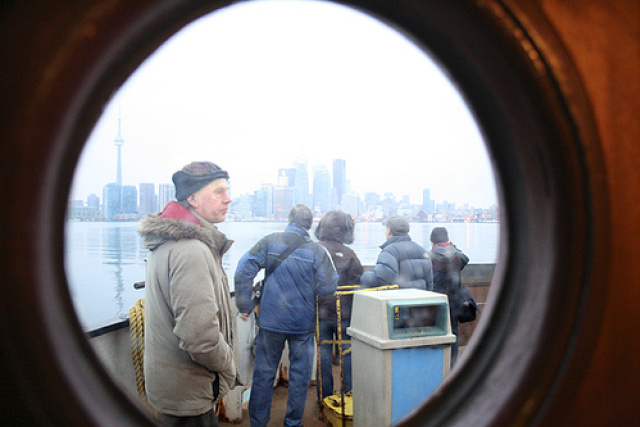
Michelle Fost
WHY NOT THROW KISSES? My parents thought it hilarious when I sent them giddy kisses from behind the glass at JFK. I saw them standing there, gesturing with their hands lifting off their mouths into the air in my direction. I mistakenly thought they were sending me farewell and bon voyage kisses, and I sailed my kisses back to them. My parents saw it as slapstick. They kissed and laughed and waved their arms. They would tell me later how they were trying to remind me to pick up the carton of cigarettes we’d purchased together at duty free for our Israeli cousin, Marta. On both sides of the glass our gestures grew larger and more rapid fire as they mimed the smoking of cigarettes and I broadcast kisses. We had terrible reception. Last week, I brought my son to the island airport in Toronto for a school trip to New York. After all these years, what’s a mother to do? We said our farewells. I’m mostly on board with his desire to make his way as independently as possible. I left him at the ferry and walked back toward the car. I stopped to watch as the ferry carried my ...
WHY NOT THROW KISSES? My parents thought it hilarious when I sent them giddy kisses from behind the glass at JFK. I saw them standing there, gesturing with their hands lifting off their mouths into the air in my direction. I mistakenly thought they were sending me farewell and bon voyage kisses, and I sailed my kisses back to them. My parents saw it as slapstick. They kissed and laughed and waved their arms. They would tell me later how they were trying to remind me to pick up the carton of cigarettes we’d purchased together at duty free for our Israeli cousin, Marta. On both sides of the glass our gestures grew larger and more rapid fire as they mimed the smoking of cigarettes and I broadcast kisses. We had terrible reception. Last week, I brought my son to the island airport in Toronto for a school trip to New York. After all these years, what’s a mother to do? We said our farewells. I’m mostly on board with his desire to make his way as independently as possible. I left him at the ferry and walked back toward the car. I stopped to watch as the ferry carried my ...
